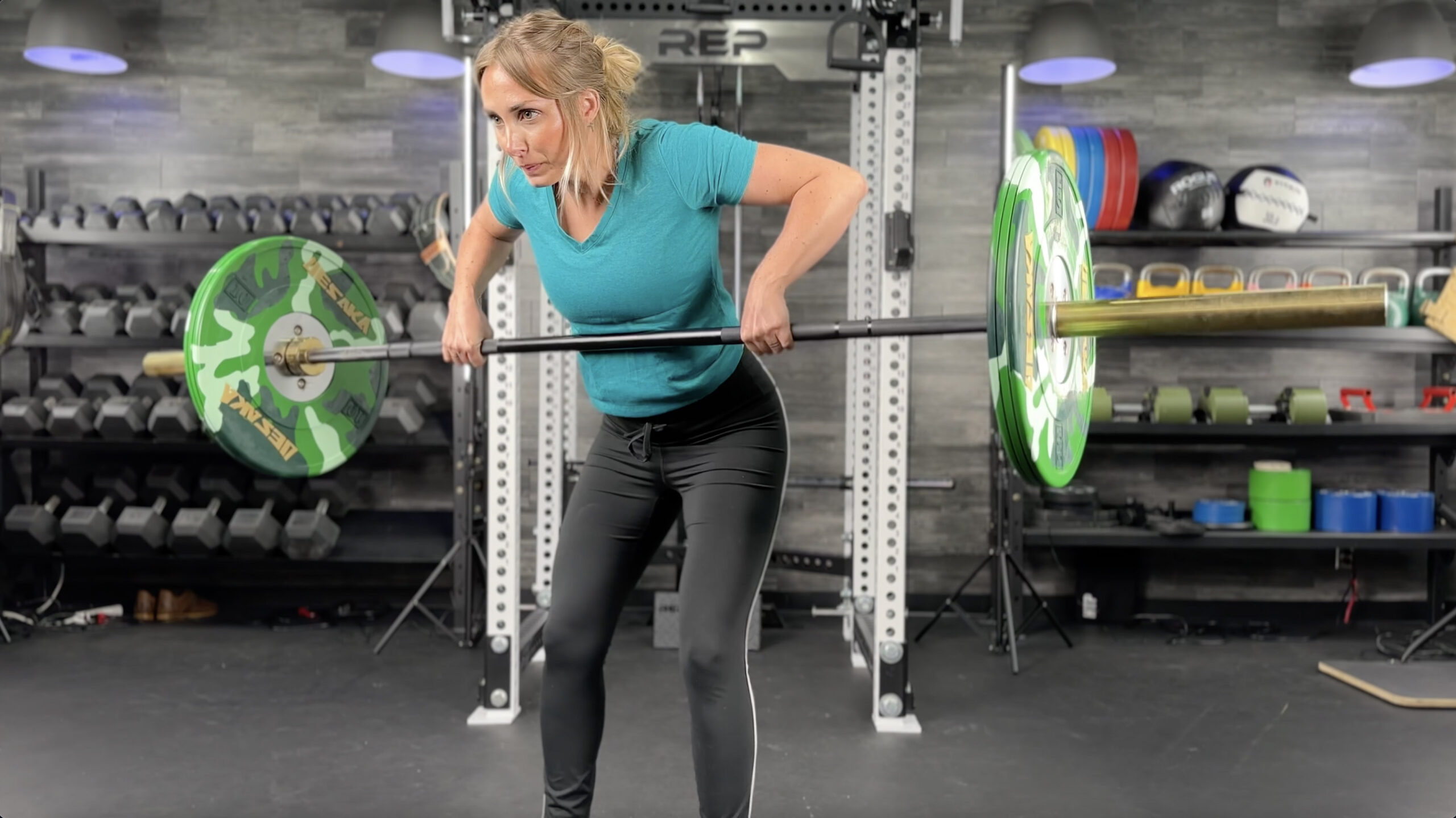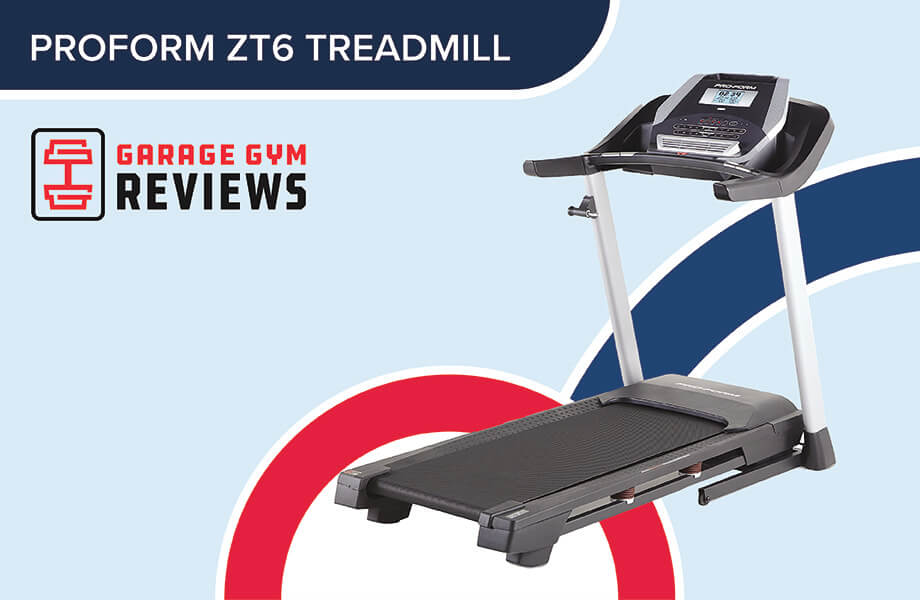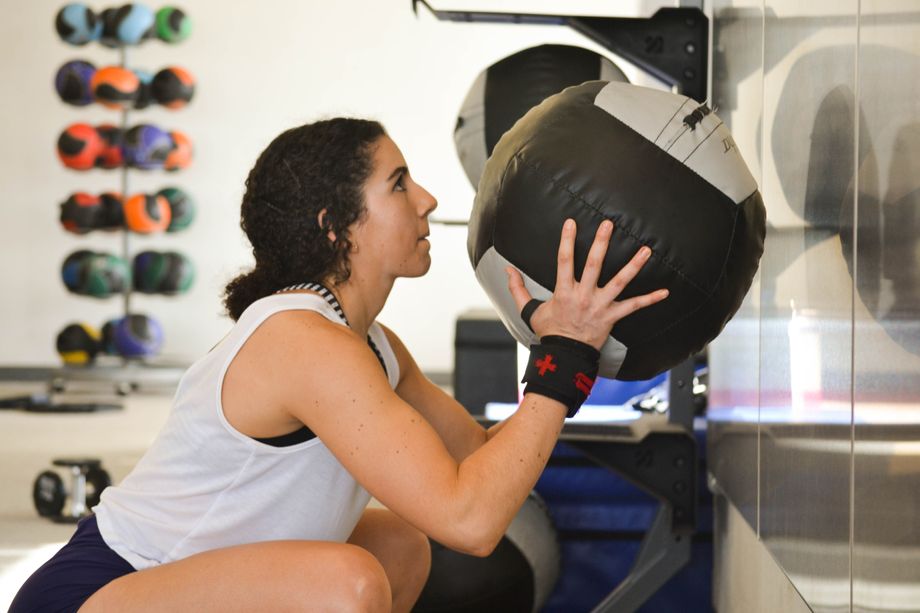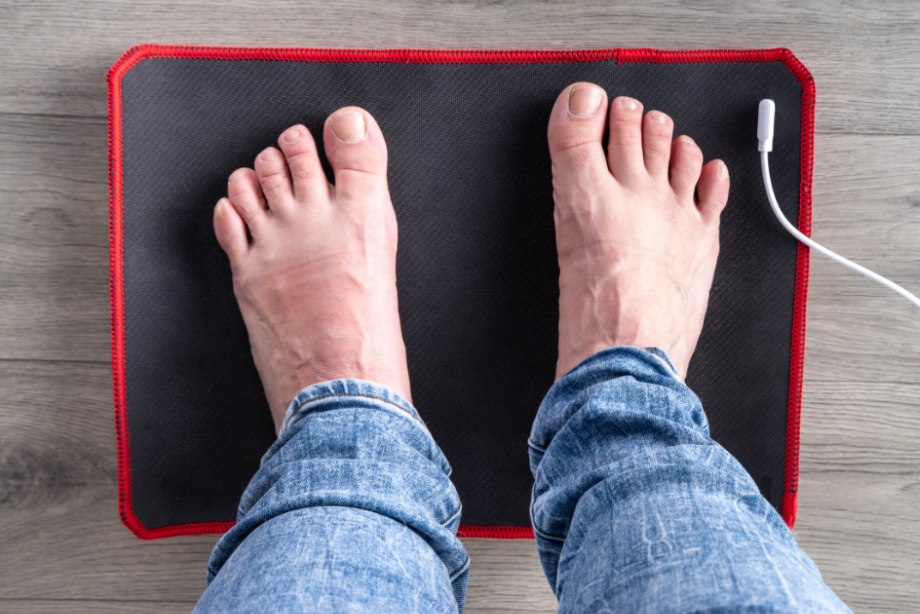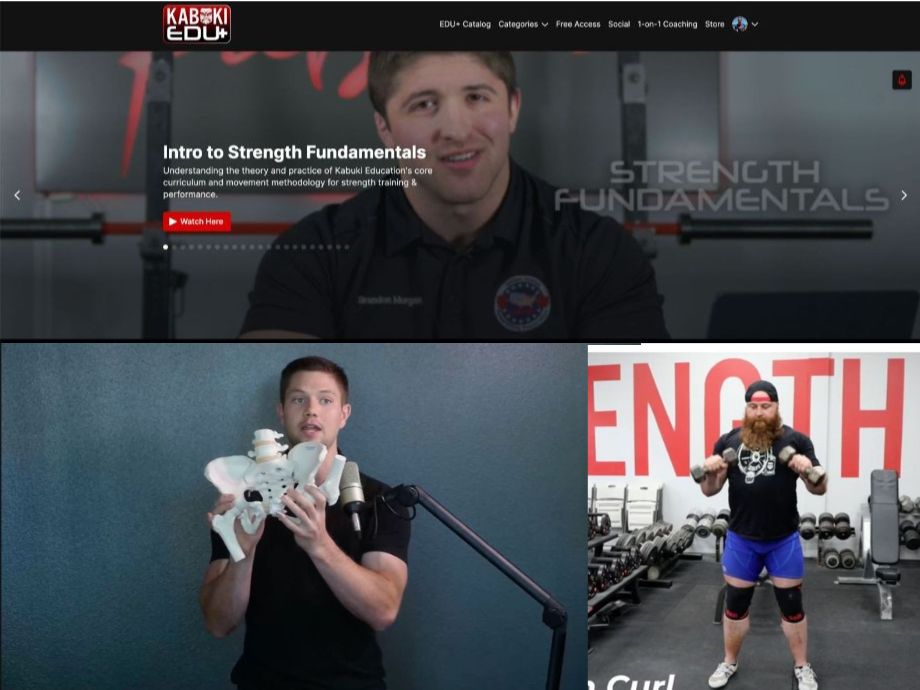I’ve done a lot of different workouts in the 10 years that I’ve been training. You name it and I’ve probably done it. But one workout that stands out to me to this day is the 5×5 workout. When I first heard about it from a friend, I was skeptical. There were only a few different exercises and I had to lower my weights and start light (yes, I had to take a hit on my ego!).
But I decided to give it a go anyway and boy, am I glad I did. The weights ramped up quickly and what seemed easy at first soon became challenging. Within two or three months, I was able to hit 5 sets of 5 reps on the barbell squat for 220 pounds. It felt like a massive achievement.
RELATED: Benefits of Squats
By following the 5×5 workout, I gained a ton of strength and size. And you can do the same. In this article, I’ll start by going through the history of the 5×5 workout, and then go over what the workout involves and why and how to do each exercise. Without further ado, let’s build some serious muscle.
What Is a 5×5 Workout?
Depending on how old you are or how long you’ve been bodybuilding, the term “5×5 workout” may mean something different to you. Bill Starr created the original 5×5 workout in the 1970s, but for millennials like myself, I’ve always known the 5×5 workout to be the StrongLifts version (which was created in 2007). The latter will be the one I go through in more detail in this article. There are, of course, other versions, but these are the two most commonly known.
Either way, what the workout involves and the benefits of following a 5×5 program are the same:
- You train compound exercises using barbell lifts only.
- You add weight to each exercise every workout (this is called progressive overload).
- You train three times a week, with at least one rest day in between each workout.
- Most exercises will be 5 sets of 5 repetitions, hence the name 5×5 (Bill Starr’s includes some exercises that are in the 10-rep range and you do deadlifts in the StrongLifts version for 1 set of 5 reps).
- It’s simple but effective for gaining muscle.
- Because you’ll be doing the same exercises over and over again, your nervous system will get a ton of practice. This could mean neural adaptations1 and may result in better form in the long run.
5×5 Workout: StrongLifts Version
To start with, I’ll go through the StrongLifts 5×5 workout. This is the one I have the most experience with as it’s the one I’ve done myself to build muscle mass. Later, I’ll go through an alternative training program, still based on the 5×5 principles but with some adaptations. I’ll also explain reasons why some people may choose an alternative 5×5 strength training program.
Workout A
- Barbell back squat: 5 sets of 5 reps
- Barbell bench press: 5 sets of 5 reps
- Barbell row: 5 sets of 5 reps
Workout B
- Barbell back squat: 5 sets of 5 reps
- Barbell overhead press: 5 sets of 5 reps
- Barbell deadlift: 1 set of 5 reps
With this workout, you exercise three days per week. You do Workout A, then Workout B, then Workout A, then Workout B, and so on. You take at least one rest day between each workout, so you can train on Monday, Wednesday, and Friday; or Tuesday, Thursday, and Saturday; or Wednesday, Friday, and Sunday. If you absolutely have to train two days in a row, that’s fine, too (but it’s not ideal!).
Start with lighter weights in the beginning. Add 5 pounds to each exercise (except deadlifts, where you add 10 pounds). Once you get to lifting heavier weights, it’s important to do more warm-up sets with that specific exercise before you get to your working sets.
And that’s it! Now, let’s talk about each exercise: the why, the how, and some tips so you’re able to get the most out of each one.
Barbell Back Squat
Why Do It: Squats are, without a doubt, one of the best lower body exercises you can do in the gym or at home. With the barbell back squat, you’ll work your quadriceps, hamstrings, glutes, core, calves, hip flexors, and more. Not only this, but squats can also increase certain hormones that may help to stimulate muscle growth and regenerate muscle tissue2.
How to Do It:
- Position a barbell on a rack so that it’s at shoulder height.
- Get underneath the bar, placing it on your upper back. Your feet should be shoulder-width apart and your hands should grip the barbell tightly (keep your hands close to your shoulders so your shoulder blades are retracted).
- Unrack the barbell by standing up, then take a step or two backward. Adjust your feet position if you need to (your toes should be pointing straight or slightly outward).
- Brace your core, and then squat down as deep as possible. Pause for a second.
- By pushing through your feet, straighten your legs and knees until you return to the starting position.
- Repeat until you’ve reached the desired number of reps, then re-rack the barbell.
My tips: I could be here all day with this one! But to keep it short: take some time to ensure the bar is at the right position on the squat rack before getting underneath it, keep your chest up and hips back, drive your knees outward, and ensure that you’re stretching your hips and ankles before you squat heavy. A good pair of weightlifting shoes can make all of the difference, too.
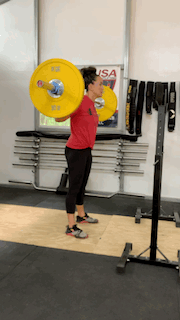
Barbell Bench Press
Why Do It: The muscles a bench press works include your pectoralis major and minor, triceps brachii, and anterior deltoid. With regular training and following progressive overload, strength gains and hypertrophy of the chest, triceps, and shoulders can be achieved.
RELATED: Best Olympic Barbell
How to Do It:
- Set up the starting weight, and then lie face-up on a flat bench. The barbell should be directly above your face and your feet should be resting flat on the floor.
- Grip the bar firmly with your hands slightly wider than shoulder-width apart.
- Engage your core and lift the barbell off the rack, then tilt your wrists forward.
- Bring the bar slowly down to your chest, then push it back up to the original position.
- Continue for the desired number of reps, then put the bar back on the rack.
My tips: Hold the barbell tightly at all times, especially as the weight gets heavier. Make sure that you retract your shoulder blades and keep your chest up, with a slight arch in your back. Your feet can be used to drive the bar upward, so make sure they’re flat on the floor.
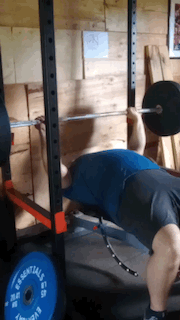
Barbell Row
Why Do It: The barbell row is an upper body movement and works the lats, rhomboids, biceps, rear delts, and more. A strong back helps with the other movements in this 5×5 workout, including the bench press, deadlift, and overhead press.
How to Do It:
- With the barbell on the ground, add some weight plates until you get to your desired weight.
- In a shoulder-width stance, step up to the bar with your feet underneath the bar and your shins close to it (similar to how you’d do a deadlift).
- Take hold of the bar with your palms facing toward you (double overhand grip). You’ll have to lean forward at the hips to do this.
- Row the bar to the lower chest (or top of your abs) region, then pause.
- Slowly return the bar back to the position where your arms are straight, then repeat for the desired number of reps.
My tips: Whilst the bent-over row was originally done with your body at a 90-degree angle, I prefer reducing this slightly so it’s around 60 degrees. This feels more natural to me, especially when you start to get tired. This means that you’re able to pull heavier weights. Remember to grip the bar tight and keep your back in a neutral position.
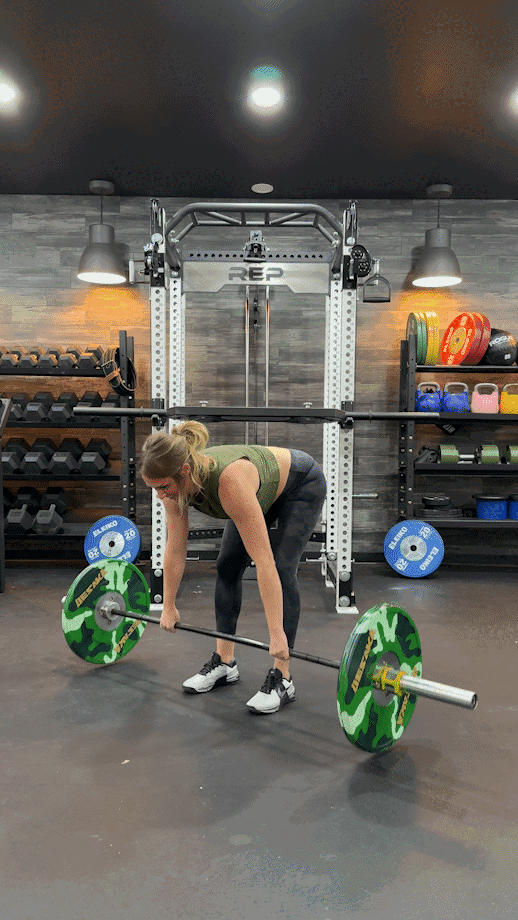
Barbell Overhead Press
Why Do It: Next up in the 5×5 program is the overhead press. It works your shoulders, trapezius, and triceps. And because you’re lifting the bar above your head, it’ll also strengthen and stabilize your core at the same time.
How to Do It:
- Start with a barbell on a rack about chest height.
- With your knees slightly bent, step underneath so the bar is resting on your upper chest, then grab hold of it with your hands slightly wider than shoulder-width apart.
- Stand up, lifting the bar off the rack. Then, take a step or two backward.
- Squeeze your glutes, brace your core, and push the bar up toward the ceiling (you’ll need to move your head slightly backward in order to do this).
- Push until your arms are straight and your head is back in a neutral position. Pause, then lower back down to your upper chest.
- Press for reps, then return the bar to the rack.
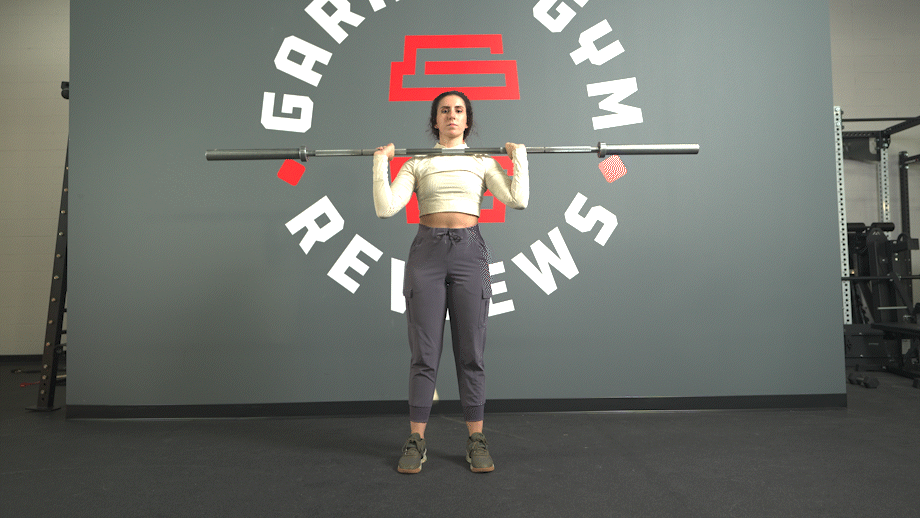
My tips: With the overhead press, the bar path is one of the most important things to consider. To maintain proper form, it should go up in a straight line. You’ll need to stay close to the bar at all times in order for this to happen. When you’re getting used to this compound movement, you might find that you end up bending your wrists. Don’t. Gripping the bar tightly helps with this.
RELATED: How to Choose a Barbell
Barbell Deadlift
Why Do It: It’s a functional movement that activates nearly every muscle group at the back of your body. Deadlifts can help to improve posture and grip strength, which means they’re great for other exercises in this 5×5 workout plan. Plus, you can’t cheat with a deadlift. You either lift it or you don’t.
How to Do It:
- Stand with your feet underneath a barbell that’s resting on the floor. The bar should be covering your shoelaces as you look down and your shins will be nearly touching the bar.
- Hinge your hips to bend forward toward the bar and take hold of it. You’ll want an overhand grip here, with your hands just outside of shoulder-width apart.
- Engage your core, drive your feet into the ground, and use your legs and hips to pull the bar up your body as you straighten until you’re in a standing position (keep the bar close to your body at all times).
- Slowly lower the bar back to the ground, then repeat.
My tips: If you wear running shoes to deadlift, you may want to consider going barefoot or getting a pair of shoes for deadlifting. The cushioning in running shoes may be stopping you from lifting heavier weights. I’ve said it before but I’ll say it again: Keep your bar close to you at all times by grazing your shins and quads on the way up and down. Some people like to deadlift with straps, so you could also try this. (I don’t use them myself, but I have in the past.)
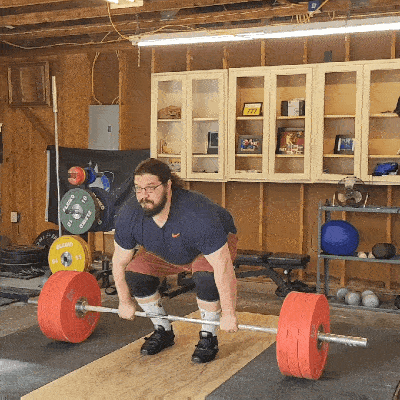
5×5 Workout: Modified Version
I appreciate that the StrongLifts 5×5 workout isn’t for everyone. There could be many reasons why you’re looking for an alternative version. You may be bored of repeating the same five powerlifting exercises over and over again. There are no dumbbells or isolation exercises and you might want to add these to your workout routine. Or, you may simply want to do bodyweight exercises because you like them.
Worry not. I have you covered. Below is my own modified version of the 5×5 workout based on my 10 years of training both myself and hundreds of clients:
Workout A
- Barbell back squat: 5 sets of 5 reps
- Barbell bench press: 5 sets of 5 reps
- Pull-up or chin-up: 4 sets of 8 reps
- Dumbbell lateral raise: 4 sets of 10 reps
Workout B
- Barbell deadlift: 3 sets of 5 reps
- Barbell overhead press: 5 sets of 5 reps
- Dip: 4 sets of 8 reps
- Seated row: 4 sets of 8 reps
- Lunge: 3 sets of 20 reps
Workout C
- Barbell back squat: 5 sets of 5 reps
- Barbell row: 5 sets of 5 reps
- Push-up: 4 sets of 8 reps
- Face pull: 4 sets of 10 reps
The same principles apply here. Train three times a week, with a rest day in between. Add weight to each exercise every time where possible, but especially to the compound exercises.
Why does this routine work? There are a number of reasons:
- Each workout still has compound exercises, which are done for 5 sets of 5 reps (it follows the general principles of the 5×5 workout).
- You’re training each of the four major muscle groups (legs, shoulders, chest, and back) every workout. Some days will have more focus than others, which gives that muscle group enough time to recover.
- From experience, training squats three times a week is hard. This workout has a break from squats in the middle.
- There are tons of benefits to bodyweight movements, such as pull-ups, dips, lunges, and push-ups. I’ve included these throughout.
- It uses a variety of rep ranges, designed not only to help with strength gains but also for muscular hypertrophy3.
- It’s probably going to be more fun as there are more exercises and a variety of equipment. This may mean that you’re more likely to adhere to it in the long run.
5×5 Workout: Final Thoughts
The 5×5 workout has been popular since the 1970s for a reason—it works. Because you’re training compound exercises that work multiple muscle groups at the same time, you’ll gain strength and size with three workouts per week. It’s important to start light and get your form correct. And be patient and trust the process, especially when it seems easy at the start.
If you’re looking to build size and strength with the 5×5 program, here are some additional tips for success:
- Deload. This simply means reducing your weights after training heavily for a period of time. Your body gets time to recover but you don’t forget the movement. Some people deload when they fail at their lifts, but you could plan deloads every 4-8 weeks (without any reduction in muscle hypertrophy4).
- Cardio. Yes, I mentioned it. The dreaded C-word. Even though the 5×5 workout doesn’t specifically mention doing cardio, I’d recommend adding some low- to medium-intensity cardio in. Not much, maybe 10 to 20 minutes at the end of each workout.
- Nutrition. If you’re serious about gaining size and strength, you’ll need to eat enough calories so that you’re able to achieve this goal. Keep your protein intake high and drink plenty of water. And of course, get plenty of sleep each night.
5×5 Workout: Q&A
Is the 5×5 workout effective?
Yes, the 5×5 workout is one of the most effective workouts out there. It’s simple because there is a limited number of exercises and you don’t need a ton of workout equipment. That being said, it’s still effective. The workout only focuses on compound exercises that work your entire body. If you stick to it, you’ll be lifting heavy in no time—and getting the gains that come with this, of course!
Is 5×5 enough to build muscle?
A full-body workout such as a 5×5 workout can be enough to gain muscle. However, it depends on where you are in your training journey. If you’re a beginner or intermediate lifter, you can get great results with it. Later on, plateaus are common and of course, there’s no accessory work involved. At this point, to continue building muscle and to keep motivation levels high, you may wish to change your weightlifting routine.
How long should a 5×5 workout take?
From experience, a 5×5 workout can take anywhere between 30 and 90 minutes to complete (excluding your warm-up exercises and stretching). When you’re a beginner or lifting lighter weights, you’ll likely need less time to rest, so your workouts will be shorter. Once you start lifting heavy weights and your one-rep max increases, it can take around 90 minutes to complete a workout.
References
- Glover, I. S., & Baker, S. N. (2020). Cortical, Corticospinal, and Reticulospinal Contributions to Strength Training. The Journal of Neuroscience, 40(30), 5820-5832. doi:10.1523/jneurosci.1923-19.2020
- Wilk M, Petr M, Krzysztofik M, Zajac A, Stastny P. Endocrine response to high intensity barbell squats performed with constant movement tempo and variable training volume. Neuro Endocrinol Lett. 2018;39(4):342-348.Endocrinol Lett. 2018 Oct;39(4):342-348. PMID: 30531700.Endocrinol Lett. 2018 Oct;39(4):342-348. PMID: 30531700.
- Schoenfeld BJ, Grgic J, Van Every DW, Plotkin DL. Loading Recommendations for Muscle Strength, Hypertrophy, and Local Endurance: A Re-Examination of the Repetition Continuum. Sports (Basel). 2021 Feb 22;9(2):32. doi: 10.3390/sports9020032. PMID: 33671664; PMCID: PMC7927075.
- Ogasawara R, Yasuda T, Ishii N, Abe T. Comparison of muscle hypertrophy following 6-month of continuous and periodic strength training. Eur J Appl Physiol. 2013 Apr;113(4):975-85. doi: 10.1007/s00421-012-2511-9. Epub 2012 Oct 6. PMID: 23053130.


